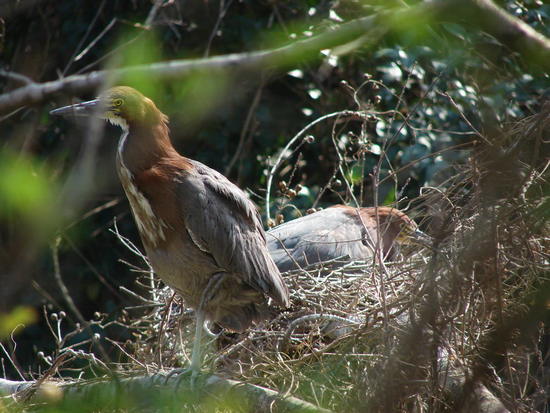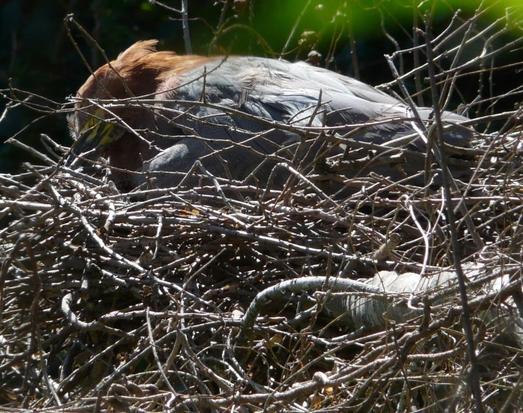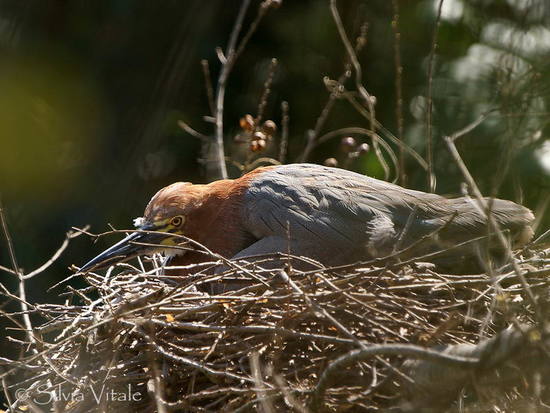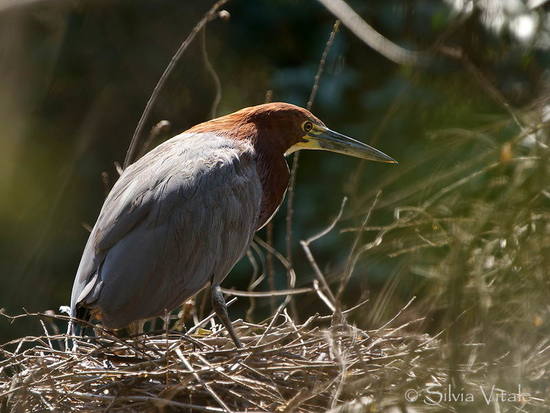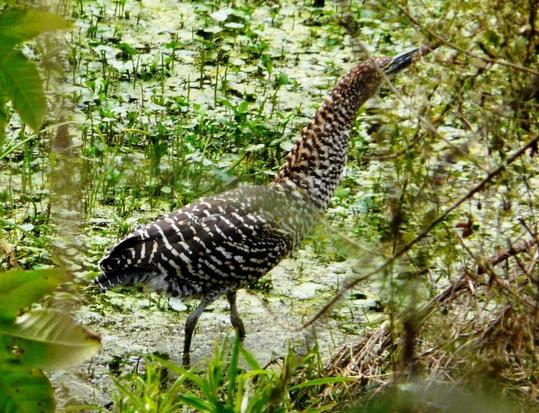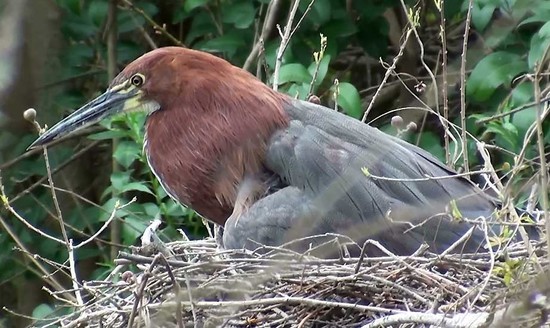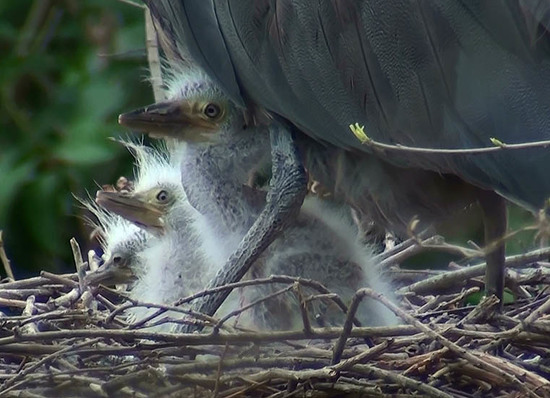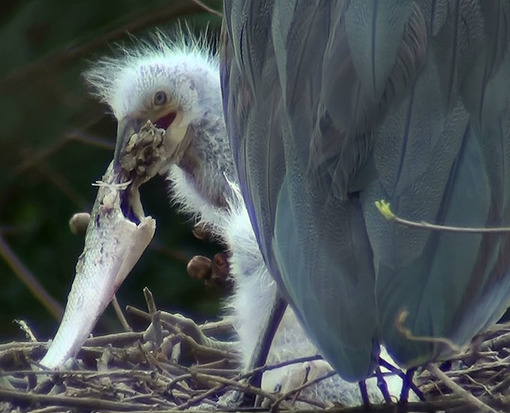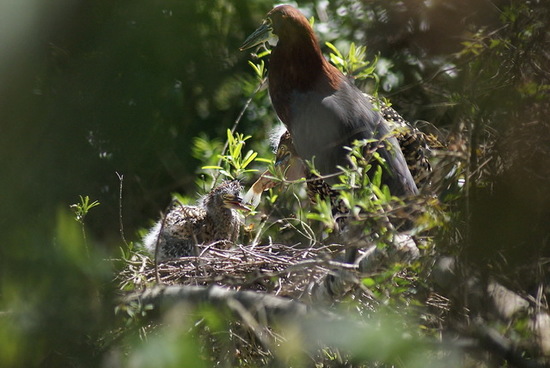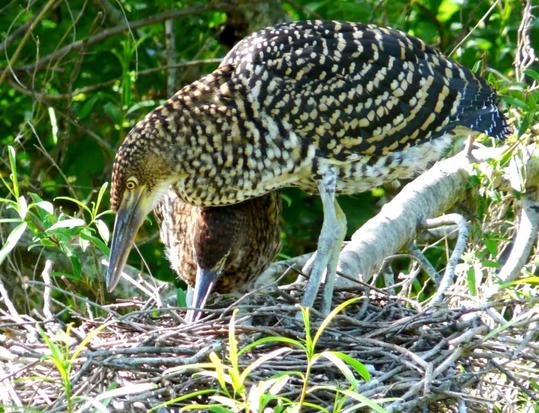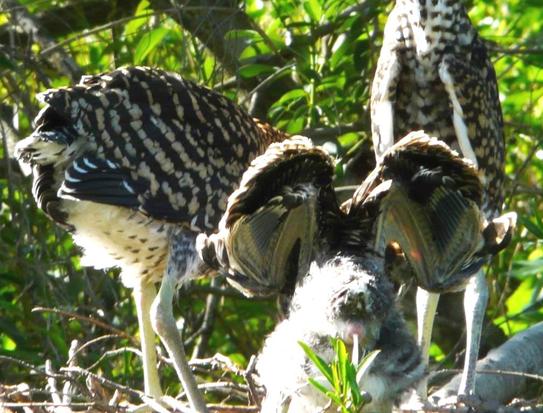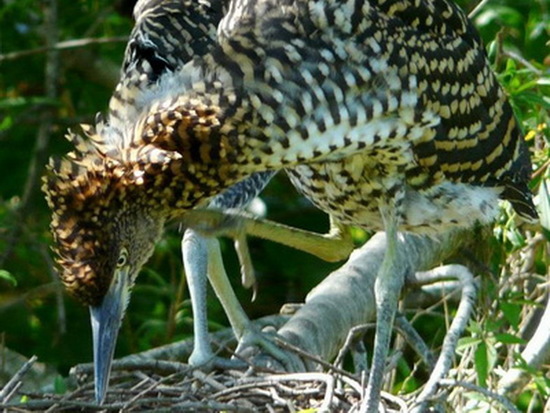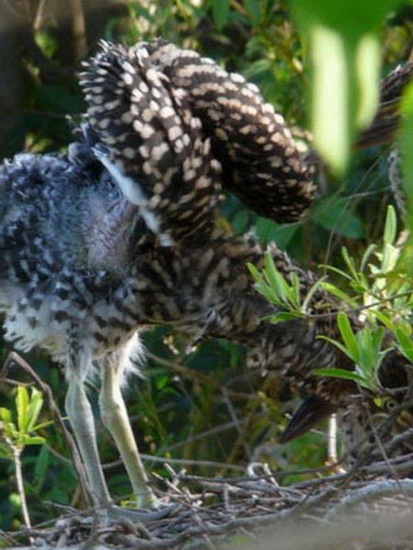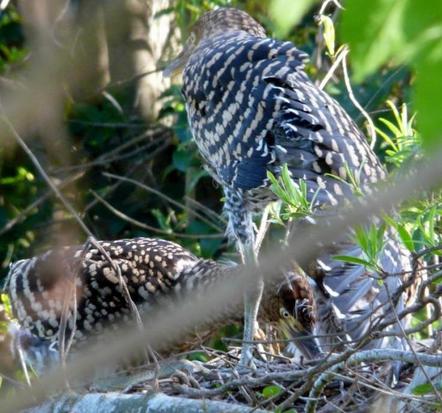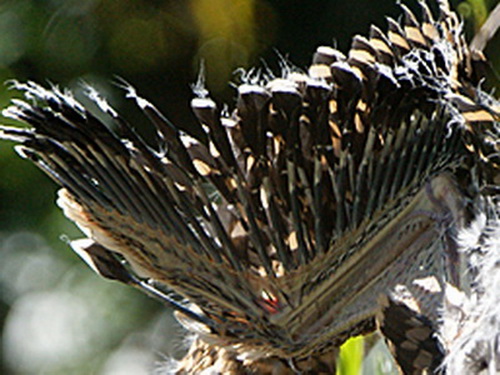Rufescent Tiger-Heron - nest follow-up at Canal Viamonte 2010
The rufescent tiger-heron is a bird of solitary habits. Away one from the other, they keep within their limits and do not interfere. With the arrival of the breeding season two Tiger-Herons together may be a promising signal. They nest up in trees solitarily. This characteristic differentiates them from other herons, such as the great and snowy egrets and the cocoi heron, which do nest in mixed heronries.
In August 2010 this pair of tiger-herons was spotted in the nest. The previous instances: courtship, nest building and mating were not observed. The chosen tree was a Sapium haematospermum on the slope of an embankment which overlooks the Viamonte Canal. The branch extended over the canal and the nest was at eye level. While the surrounding vegetation did not grow it was easily photographed. The nest was built on forked branches. It is a flat platform made of twigs and sticks which form a lattice structure and was distally located on the branch. At first glance it seemed fragile. Nevertheless, during the whole process it stood up to strong gusts of wind.
In August 2010 this pair of tiger-herons was spotted in the nest. The previous instances: courtship, nest building and mating were not observed. The chosen tree was a Sapium haematospermum on the slope of an embankment which overlooks the Viamonte Canal. The branch extended over the canal and the nest was at eye level. While the surrounding vegetation did not grow it was easily photographed. The nest was built on forked branches. It is a flat platform made of twigs and sticks which form a lattice structure and was distally located on the branch. At first glance it seemed fragile. Nevertheless, during the whole process it stood up to strong gusts of wind.
Both adults take turns to incubate. Once a simple changing of guard ritual was observed. Head movements and bill clashes are the explicit consent to change positions. The newly arrived verifies the state of the eggs before sitting on them. It opens the legs and stretches them backwards as it positions on the eggs with the already uncovered brood patch. This brood patch is a part of the belly which becomes featherless for the purpose. The skin of this area suffers some modifications which provides enough heat to warm the eggs.
In the surroundings there was a juvenile rufescent tiger-heron. As it is known this heron species is monogamous, we presume this is an immature of their previous clutch. The smallest one? Never did the juvenile interfere with the nest. It stayed near for some time and then left.
The nest was spotted on 21st of August. Bearing in mind that incubation takes some thirty days, hatching could be expected by middle of September. On 17th of September an adult was sitting on the eggs but there was something unusual. It was not lying passively as usual. Something seemed to be pricking it from below. After a long wait the adult exposed two small white balls only for a short time and covered them again to warm them. Other observers saw the two chicks and a third egg still unhatched. This is not weird since there are species that begin incubation as eggs are laid. So chicks are born sequentially. This is known as asynchronous hatching. In the case of herons egg laying is every two days, time needed for the egg to form.
The nest is the world of the heron chicks during two months till they begin to fly. Parental care is more dedicated at the beginning when siblings need to be fed and to be warmed. Once this stage is over their development is very quick and there is an increasing separation from the siblings. Lack of space obliges parents to watch the chicks from a nearby branch and when they are more mature they are left alone in the nest. Chicks' diet consisted of fish brought from the river. The adult regurgitated pieces of semidigested fish in the nest. As newly hatched they could not cope with the piece so they poked it with the bill. Very soon they were able to swallow it whole. There was a struggle to get hold of the piece, but no violence. There were no squabbles. Nor a fierce competition among siblings. In herons larger siblings usually attack the smallest one with bouts of pecks or push it out of the nest, which inevitably ends up in the chick's death. This was not the case but the smallest chick got rather behind the other two, which made us fear the worst. Luckily it caught up with the rest after a month.
Daily life goes by in silence. In solitary nesting this is the way to pass unnoticed. This is another difference with other herons which breed in colonies, where chicks are very noisy. One of the chores is to keep the nest stable. Three small nestlings moving around, an adult dodging them and the branch moved by the wind contribute to loosen the structure. So, they need to relocate, readjust or add more new material. The chicks watch their parents and imitate the actions.
Cleaning and hygiene go hand in hand. Parents keep the nest clean. Any infestation muy result fatal when chicks are small and fragile. They throw literally every bit of food over board. As far as the chicks are concerned they poop out of the nest. On the edge of the nest they point their rear parts high to expel fecal matter as far as possible. And personal hygiene is not to be neglected
Stretching legs, wings and neck is a way to exercise and strengthen the muscles which must be fully functional in a short time. In my opinion these stretchings also help to free feathers. Feathers grow enclosed in tubules which when torn from tip to base let the shafts unwrap.
07-02-11 © Roberto Ares


